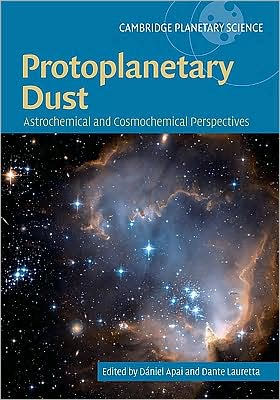Table of Contents
List of contributing authors xi
Preface xv
Acknowledgments xviii
1 Planet formation and protoplanetary dust 1
1.1 Types of extraterrestrial material available 2
1.2 Chronology of planet formation 6
1.3 Protostellar collapse 8
1.4 Structural evolution of protoplanetary disks 9
1.5 Chemical evolution of the gas disks 11
1.6 Laboratory dust analogs 12
1.7 Dust composition in protoplanetary disks 13
1.8 Dust coagulation 14
1.9 Thermal processing of the pre-planetary material 15
1.10 Dispersal of protoplanetary disks 17
1.11 Accretion of planetesimals and rocky planets 18
1.12 Key challenges and perspectives 19
2 The origins of protoplanetary dust and the formation of accretion disks 27
2.1 Dust in the interstellar medium 28
2.2 Presolar grains in primitive Solar System materials 40
2.3 Star formation 52
3 Evolution of protoplanetary disk structures 66
3.1 Some properties of protoplanetary disks 67
3.2 Protoplanetary disk structure and evolution 70
3.3 Particle dynamics 80
3.4 Protoplanetary disk dynamics and dust evolution 85
3.5 Summary 92
4 Chemical and isotopic evolution of the solar nebula and protoplanetary disks 97
4.1 Protoplanetary disks 99
4.2 Chemical constraints from early Solar System materials 110
4.3 Isotopic anomalies and condensation sequence 111
4.4 Oxygen isotopes 113
4.5 Summary 122
5 Laboratory studies of simple dust analogs in astrophysical environments 128
5.1 Dust-analog synthesis 131
5.2 Characterization techniques 136
5.3 Dust processing 140
5.4 Grain-growth studies 143
5.5 Grain-catalysis studies 149
5.6 Conclusion 155
6 Dust composition in protoplanetary disks 161
6.1 Modeling the dust composition 162
6.2 Laboratory studies of Solar System dust 164
6.3 Dust composition in Solar System samples 166
6.4 Remote sensing of dust around young stars and in comets 170
6.5 Composition of the dust 177
6.6 Processing history of grains as derived from the dust composition 185
7 Dust particle size evolution 191
7.1 Dust coagulation in the Solar System and in extrasolar protoplanetary disks 192
7.2 Nomenclature and definitions 193
7.3 Coagulation basics 196
7.4 Laboratory simulations of dust coagulation 197
7.5 Observational tracers of grain coagulation 198
7.6 Chondritic meteorites 206
7.7 What do chondrite matrices tell us about the grain size of nebular dust? 214
7.8 Dust coagulation: how and when? 217
7.9 Constraints on dust coagulation from amorphous silicates 219
7.10 When did dust coagulation occur? 221
7.11 Astronomical versus meteoritic constraints 223
8 Thermal processing in protoplanetary nebulae 230
8.1 Thermal processing: annealing and evaporation 231
8.2 Observations of thermal processing in protoplanetary disks 234
8.3 Thermal processing in the Solar System: chondrites 241
8.4 Heating mechanisms 250
8.5 How would Solar System formation look to an outside observer 256
8.6 Promising future experiments 257
9 The clearing of protoplanetary disks and of the proto-solar nebula 263
9.1 The observed lifetime of protoplanetary disks 263
9.2 Disk dispersal processes 274
9.3 Our Solar System 277
9.4 Discussion 288
10 Accretion of planetesimals and the formation of rocky planets 299
10.1 Observational constraints on rocky-planet formation 300
10.2 Planetesimal formation 304
10.3 Growth of rocky planets 312
10.4 The effect of the giant planets and the formation of the Asteroid Belt 321
10.5 Summary 328
Appendix 1 Common minerals in the Solar System 336
Appendix 2 Mass spectrometry 340
Appendix 3 Basics of light absorption and scattering theory 343
Glossary 349
Index 363




